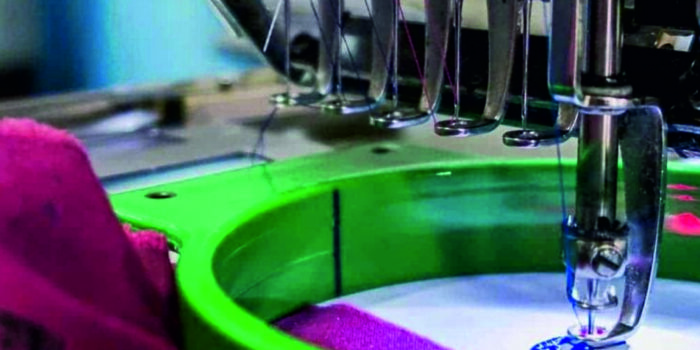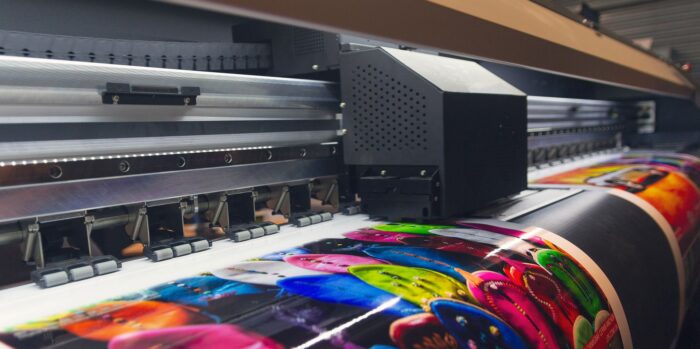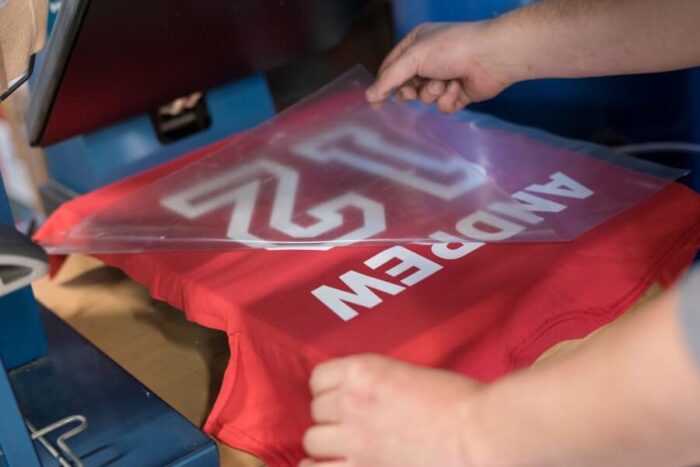Customisation Application
We provide a range of customisation processes to apply a logo to a garment.
Whether you choose embroidery or printing machinery, your logo will look stand out and make you instantly recognisable with your customers. There are, however, some points to consider like the material before you decide on what kind of method of application you choose.
EMBROIDERY

This is a popular choice for businesses due to its durability, professional appearance, and versatility.
Here are some key points about embroidery on workwear:
Durability: Embroidered designs are created using threads stitched into the fabric, making them highly resistant to wear and tear, maintaining their appearance even after multiple washes.
Professional Appearance: Embroidery offers a high-quality, professional finish that adds texture and depth to logos, enhancing brand perception and credibility.
Versatility: Embroidery can be applied to a wide range of fabrics and garments, from thick jackets and hats to polo shirts and aprons. This makes it suitable for various industries, including hospitality, healthcare, construction, and corporate environments.
Customisation: Embroidered workwear can be customised for various logo sizes and placements, allowing businesses to create personalised workwear that matches their brand’s personality.
DTF TRANSFER PRINTING

DTF printing (Direct-to-Film) is a versatile printing method that allows for high-quality, vibrant designs on a wide range of materials, including textiles and non-textiles.
Process: The design is printed onto a PET film using CMYK inks, then an adhesive powder is applied, and the film is heat-pressed onto the desired surface.
Versatility: DTF printing can be used on various fabrics, including cotton, polyester, nylon, and even non-fabric surfaces like wood and glass.
Durability: The prints are durable and can withstand repeated washes, making them suitable for custom apparel and promotional products.
Applications: Common uses include custom apparel, promotional items, and branding on various surfaces. Ideal on t-shirts and lighter weight fabrics where embroidery might be an issue.
Vinyl Transfer

Another method of printing on a garments is by cut transfer. We use this method for more simple colour designs like that used for numbers on football shirts or names on Stag & Hen tops. A sheet of vinyl is precision cut to the design of your logo or design. We then ‘weed’ away any excess material to leave the remaining design on the release paper. It is cut in reverse so it’s then flipped and heat sealed onto the garment using a heat press.
Vinyl transfer is ideal for simple designs with an can be overlaid to create designs with a small number of colours. It works especially well for relatively low-quantity orders. This method is suitable for most garments (with the exception of fleece and wool),
Care Guidance for Printed Items
To maintain the quality and longevity of your printed garments, do not tumble dry and at a low temperature. Heat and mechanical action from tumble drying can sometimes cause the print to crack, peel, or fade prematurely.
Any damage caused by tumble drying will not be covered under our returns or replacement policy.

 NO Minimum Order
NO Minimum Order Free delivery on orders over £95
Free delivery on orders over £95 Fast Turnaround
Fast Turnaround In-House Facilities
In-House Facilities